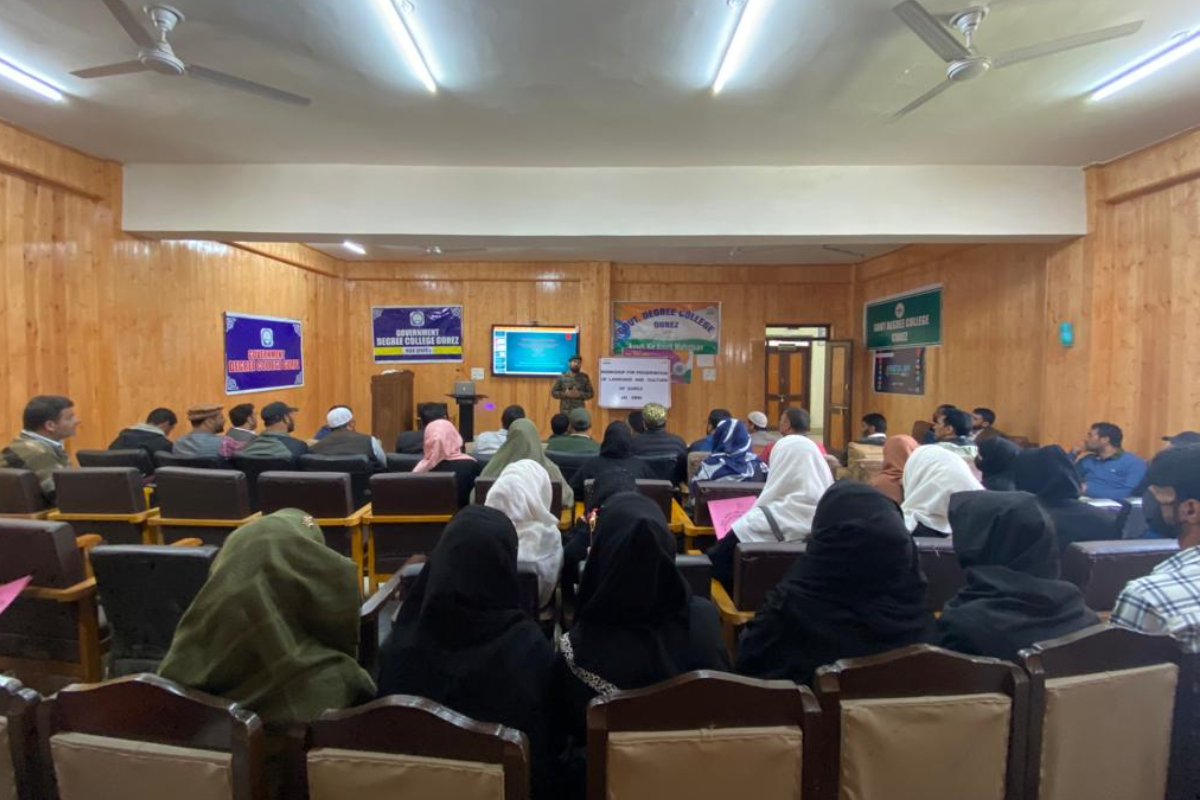Finally, someone’s making a worthwhile ideational change in Kashmir. It’s just beyond the Valley itself so far – but, five years plus since the Centre took direct control, that’s still at least something. It’s the army that’s doing it, although it should be the administration, one is happy that at least someone is doing it.
I’m talking of a Shina Cultural Centre, which is being built in Gurez, a lovely valley just beyond the northeast of the main Kashmir Valley. This Centre will highlight aspects of Shina culture ranging from polo playing to fabrics and from history to crops.
There’s a machan outside, interactive video panels, a tiny AV theatre, a traditional loom, a hobby horse and polo mallet, and actual crops, seeds, and pictures of native flora and fauna.
Shina is a major language of the Dardic peoples of the erstwhile state of Jammu and Kashmir, mainly in Gilgit, Skardu (both beyond the LOC), Batalik, Drass, Tuliel and, of course, Gurez, where this centre is being built.
When Home Minister Amit Shah piloted constitutional changes regarding the state, he had spoken of a new dawn that would bring better times for marginal groups in the state. There may have been little sign of notable initiatives over the four years since, but the army has very smartly stepped into the breach.
The idea apparently came from Captain Alok Bansal of the India Foundation. At the instance of the Army Commander, the task has been taken up by 28 Division based in Kupwara.
After taking command of this celebrated Division early this year, Major General Girish Kali initiated work on what is slated to be the first of four such centres, including one each focused on Gujjars, Pahadis, and Kashmiris.
Awesome military efficiency
The Shina Cultural Centre has been built with amazing efficiency ever since a dilapidated building of the tourism department was handed over just two months ago. The term ‘military operation’ is often used metaphorically, but this has truly been one in word and deed!
With design and informational inputs from experts, army officers, men, porters and labour have expertly built a remarkable little centre at a scenic spot on the bank of the Kishanganga, with the spectacular Habba Khatoon hill as a backdrop, and the scenic panorama of a tent-spotted hillside opposite.
The Centre is located just beyond the bridge most visitors cross to reach Gurez’s main town, Dawar. So, it will surely attract a large number of tourists, acting as one more magnet to bring tourists to the Gurez Valley.
Over the decades, smaller identities such as those of Gujjars, Gurezis, Tuleilis, Pahadis and Bakerwals have been neglected, if not actually kept down by the more dominant and ever-aspirant Kashmiri identity. It is about time this changes, at least in the confines of Gurez.
The leaders of the National Conference and the BJP in Gurez, both former MLAs), have both warmly welcomed the project.
Remote region
Happily, tourism to this area has already taken off over the past couple of years. Motorcycle and car-borne visitors from other parts of north Kashmir and a large number of tourists from other parts of the country visit Gurez in droves now.
Infrastructure has mushroomed very recently and includes restaurants, cafes, guest houses, a very large number of new houses, and lots of camping possibilities every summer.
Of course, this influx is limited to about three months every summer, for the 11,000-foot Razdan Pass – on the main Himalayan range which divides Gurez from the main Kashmir Valley – is blocked for about six months every winter.
No wonder, the construction of a tunnel under the pass is a major demand of people and community and political leaders in Gurez. What seems more likely is the paving of the track connecting Gurez to Drass, through the even more enchanting Tuliel Valley.
The army is considering organising a motor rally from Gurez to Drass. That, one hopes, would bring media focus onto the need to pave this route and turn it into an alternative way to leave Gurez, particularly in winter.
At present, helicopter rides (at around ₹2,000 per passenger) are the best option available to get to the Valley in winter. Shops have to stock up in autumn – and still often run out by spring. In summer too, transportation costs a lot. So, things are expensive and sometimes unavailable.
All this contributes to the people’s appreciation of efforts to facilitate the infrastructure required by tourists – including the army’s efforts. Of course, the army’s relations with local populations have always been cordial in such remote parts of J&K as Karnah, Gurez, Uri, and Ladakh.
One hopes that others, including civil society, will take a lesson from the good work that is taking shape as the Shina Cultural Centre.
David Devadas is a journalist and security, politics and geopolitics analyst
Disclaimer: Views expressed above are the author’s own










